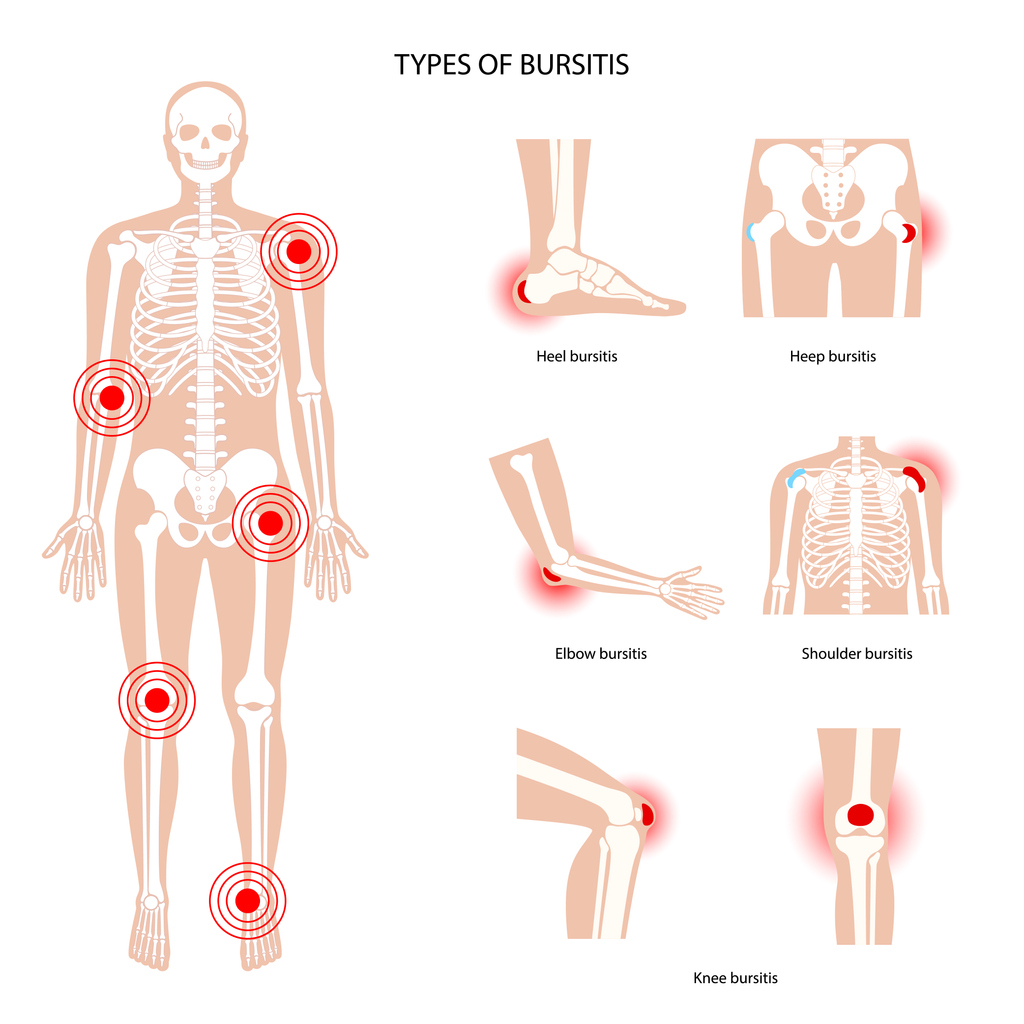
There are many possible causes for a throbbing knee. One such condition is knee bursitis, wherein bursas, tiny sacs of fluid around the knee joint, get inflamed. Knee bursitis can usually be treated with home remedies, but prolonged knee pain may require you to visit a doctor for treatment.
Read on to learn how to treat and alleviate the pain caused by knee bursitis.
Home Remedies
There are many ways you can deal with knee pain at home. These home remedies can help you alleviate pain while allowing your body to heal.
You may already be familiar with the RICE method — rest, ice, compression, and elevation.
Rest
Take a break from your normal routine and allow your knee to rest. Limit movements and activities that strenuously engage your knee.
Ice
Apply a cold compress to your knee three to four times a day for 20 minutes a time. Continue with this until the pain and swelling of your knee subside.
Compression
Use compression bandages or knee sleeves around the affected area. The gentle pressure from these wraps keeps your veins from swelling and promotes better blood circulation. The affected area is allowed better oxygen flow, resulting in faster healing.
Elevation
Elevate your knee by propping it up on a pillow. This eases the pain by keeping blood flowing away from the affected area and preventing it from accumulating in the knee. Better blood circulation helps reduce swelling.
Pain Relievers
Aside from the RICE method, you can take non-steroidal anti-inflammatory drugs (NSAIDs). These over-the-counter medicines help with pain relief. Some examples of NSAIDs are naproxen sodium, aspirin, and ibuprofen.
Medical Treatments
If the above techniques prove ineffective in easing your knee pain, consult with an orthopedic doctor. They may prescribe any of the following treatments, depending on the severity of your case.
Bursa Injection
If over-the-counter drugs are unable to relieve the pain, your doctor may recommend a bursa injection, wherein you will receive a shot of a steroid, such as triamcinolone, in the knee. This may be accompanied by an anesthetic, which will extend the injection’s effect and relieve pain while waiting for the steroid to set in.
Corticosteroids cause side effects, however, so they must be taken in moderate amounts. Intaking steroids continuously can damage your tendons, so follow your doctor’s prescribed amount closely.
PRP Injections
Another treatment is platelet-rich plasma (PRP) injections. PRPs are taken from a patient’s blood, and contain cytokines and growth factors. They are proteins that promote the growth of cells in the blood and immune system. PRP injections promote tissue generation and healing in the affected area.
Physical Therapy
A physical therapist or sports medicine practitioner can teach you exercises that will help ease your pain and keep knee bursitis from reappearing. Aside from developing flexibility, your muscles are strengthened through physical therapy, improving knee function and mobility.
Knee Supports
Your doctor may prescribe equipment that supports your knee’s normal functioning, like wedge insoles, kinesiology tape, knee braces, canes, and crutches.
Wedge insoles can help balance footing if knee bursitis is due to uneven alignment of the legs. Kinesiology tape improves the circulation of blood and lymphatic fluid. If kneeling cannot be helped, you should wear knee pads. If you experience great difficulty walking, you can use a cane or crutches.
Antibiotics
If an infection arises from knee bursitis, your doctor may recommend antibiotics to target the bacteria. You can take it in the form of a pill or an intravenous drip, depending on your doctor’s recommendation.
Aspiration
A doctor may recommend bursa aspiration for bursitis appearing alongside an infection or gout. Aspiration involves inserting a needle to drain the bursa’s fluid. The fluid may be taken for further examination, but the procedure itself can help relieve pain.
Surgery
The last option to treat severe knee bursitis is by removing the damaged bursa through surgery. Cases where this is necessary are extremely rare. Patients can return to their routine in as little as three to four weeks’ time.
Knee Bursitis Treatment in North Dakota
Knee bursitis can usually be treated using home remedies, including the RICE method and over-the-counter pain relievers. If pain persists, however, your doctor may recommend a bursa or PRP injection. Performing physical therapy exercises and wearing knee supports can also be of help. You may need to undergo antibiotics therapy, aspiration, or even surgery for severe cases.
Let’s get your knee to optimal health at The Bone and Joint Center with the help of our orthopedic surgeons. You can consult with Dr. Timothy Bopp, Dr. Joe Carlson, or Dr. Brian Dahl, who are board-certified and fellowship-trained knee surgeons. For general orthopedic concerns, you may speak with Dr. Derrick Cote. If you’re an athlete suffering from knee complications, our expert on orthopedic sports medicine, Dr. Timothy Juelson, can help you.
Reach us by calling (800) 424-2663, or you can schedule a consultation instead. We look forward to treating you!

